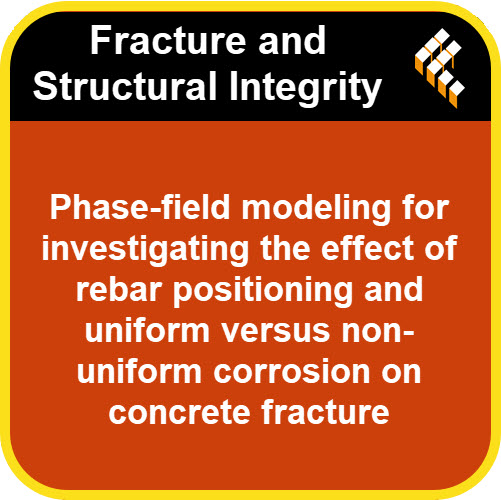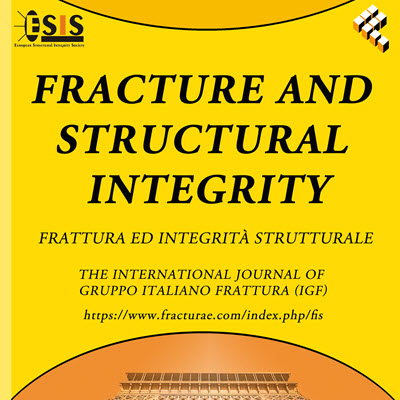Fracture and Structural Integrity: The Podcast
Stay at the cutting edge of fracture mechanics and structural integrity research with the official podcast of the Fracture and Structural Integrity journal. Join us for insightful interviews with top researchers, in-depth discussions of groundbreaking papers, and explorations of emerging trends in the field.
RSS Spotify YouTube Amazon Music
Phase-field modeling for investigating the effect of rebar positioning and uniform versus non-uniform corrosion on concrete fracture
2025-05-24
https://www.fracturae.com/index.php/fis/article/view/5278
Rebar corrosion significantly affects the overall performance and the service life of reinforced concrete (RC) structures due to the reduction in the bond strength between concrete and rebar, leading to the delamination of the concrete cover. Numerous studies have been conducted using experimental, analytical, and simulation methods to explore corrosion-induced damage. Regarding simulation methods, previous studies have focused on either uniform or non-uniform corrosion, without an overall comparison between these two scenarios in terms of crack development and displacement of rust expansion. Furthermore, in brittle materials such as concrete, the strain tensor is split into a tension part and a compression part, in which only the strain energy of the tension part controls the crack development. Therefore, this paper provides some novel aspects: (i) Two parts of the strain tensor are orthogonal in the context of the inner product with the elastic stiffness tensor behaving as a metric. This orthogonal condition combined with the phase-field modeling, helps to improve the mechanical behaviors of the materials; (ii) The numerical method (i) is used to simulate and compare the crack path and displacement due to rust expansion of RC structures under uniform and non-uniform corrosion conditions. Several RC cross-sections are conducted as follows: (a) Cross-sections containing one or multiple asymmetrically arranged rebars, with the constant rebar area fraction and the concrete cover thickness unchanged; (b) Cross-sections containing four symmetrically arranged rebars with the 10mm rebar diameter (D10) and the concrete cover thicknesses changed; (c) Cross-sections containing four symmetric D10 rebars and the pores. Through several aforementioned numerical simulation examples, this paper provides an overview of uniform versus non-uniform corrosion-induced fracture in the typical RC cross-sections. This can guide the selection of the appropriate rebar positioning for the realistic RC structures, helping to mitigate rapid deterioration due to the rebar corrosion.
DownloadFiletype: MP3 - Size: 20 MB - Duration: 17:12m (160 kbps 24000 Hz)
Powered by Podcast Generator, an open source podcast publishing solution | Theme based on Bootstrap
